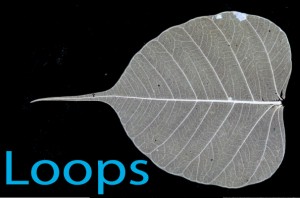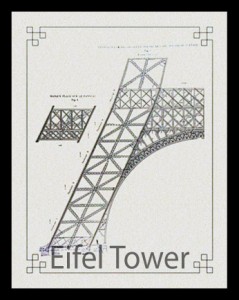 As a student at Christ’s College in Cambridge (1827-1831), Charles Darwin is reported to have been given his first microscope by one of his insect-collecting friends, John Maurice Herbert. Today, scientists use satellite nanoscopes to study intracellular molecular dynamics and signaling networks between cells.
As a student at Christ’s College in Cambridge (1827-1831), Charles Darwin is reported to have been given his first microscope by one of his insect-collecting friends, John Maurice Herbert. Today, scientists use satellite nanoscopes to study intracellular molecular dynamics and signaling networks between cells.
While loop networks have long been used in architecture, their discovery in biology is credited to Uri Alon of the Weizmann Institute of Science.
In 2002, Alon published a by entitled “Network motifs in the transcriptional regulation network of Escherichia coli” in the April edition of the journal Nature Genetics. These newly recognized loop networks, however, challenges the theory of evolution.
Loop Networks
Alon discovered a large set of previously unknown gene regulation networks in bacteria. Since then, investigators have successfully expanded the search for the existence of looping networks in neurological and vascular tissues.
Complex loop network patterns are increasingly being recognized scattered throughout nature: in plant leaves, in the brain’s cerebral vasculature, arrays of fungi living underground, even within the convoluted shape of a foraging slime mold.
 Looping patterns have long been used in architectural engineering. The metal bracings of the Eiffel Tower in Paris stand as a classic example of the complex pattern of nested loops. Loops, like redundant computer networks or electrical grids, make processes and structures resistant to damage.
Looping patterns have long been used in architectural engineering. The metal bracings of the Eiffel Tower in Paris stand as a classic example of the complex pattern of nested loops. Loops, like redundant computer networks or electrical grids, make processes and structures resistant to damage.
In a Quanta article “In Natural Networks, Strength in Loops,” science writer Emily Singer notes, “for all the natural examples of loop design, surprisingly little is known about why the networks in leaves and the cortical blood vessels are organized in this way.”
In an interview, Marcelo Magnasco, a physicist at Rockefeller University, explains the challenge: “We understand the physics of the connections between entities in full, disgusting detail; nevertheless, we do not understand the pattern as a whole. We don’t know why they look this way or why every tree is different.”
Investigators are now beginning to quantify the physics of loop networks to provide resistance to the damaging effects of fluid flow fluctuations in nature. The current focus of research has centered on tree leaves and human vascular systems.
“Plants are a spectacular system to work on as a physicist because they are beautifully mathematical,” said Eleni Katifori, a physicist at the Max Planck Institute. “The hope is that if we understand the architecture of veins, we will get a better handle on photosynthetic efficiency in plants.”
Search for a Natural Mechanism
Discovering a natural mechanism to account for the evolutionary development of these complicated loop networks is challenging a central unguided tenet of the evolution industry. According to the Evolution 101 website sponsored by the University of California, Berkeley (UCB), evolution proceeds from “chance changes”−not by design.
University of Chicago professor Darwin advocate, Jerry Coyne, weighs in on his Why Evolution Is True website, “like all-natural processes, [evolution] is purposeless and unguided.” The unguided process of evolution by chance is a mainstay tenet of the evolution industry, yet evidence of design in nature is ubiquitous.
Unguided evolution by chance is not an “add-on” tenet. Casey Luskin of Evolution News and Views explains: “the ‘unguided’ nature of Darwinian evolution by means of natural selection is not a mere metaphysical ‘add on.’ Rather, it’s a core part of how the theory of Darwinian evolution has been defined by its leading proponents.”
New Challenge
The ubiquitous evidence for complex loop networks throughout nature emerges as a new challenge for any unguided process. A recent study by Eleni Katifori and Magnasco published in PhoS One entitled “Quantifying loopy network architectures” discovered in trees “a hierarchically-nested architecture containing closed loops at many different levels” Like the design of the Eifel Tower, looping networks is not the result of some unguided chance process.
Katifoni and Magnasco propose “a robust mathematical description of the network architecture” of loops “which are ubiquitous in both natural and man-made structures”− the antithesis of an unguided chance process. Loops are a new challenge to the theory of evolution.
For biological evolution to be a “scientific fact,” evidence for the development of loop networks via a natural process is now essential. Loop networks join the growing list of challenges facing the development of a new comprehensive theory of biological evolution.
As Eva Jablonka of the Cohn Institute and Marion J. Lamb of the University of London lamented in the watershed book entitled Evolution the Extended Synthesis: “Challenges to the Modern Synthesis [neo-Darwinism] have been coming from many directions, most notably from developmental biology, microbiology, ecology, animal behavior, and cultural studies.”
Genesis
The likelihood of a new theory emerging is daunting. “No new theory,” Massimo Pigliucci of City University of New York (CUNY) noted in Evolution the Extended Synthesis, “has ever been declared itself from beneath a heap of facts.”
 Despite a flood of challenges since the publication of The Origin of Species, the scientific evidence found in nature is increasingly best explainable by the Genesis record written by Moses. According to Leonhard Euler during the Scientific Revolution, a Swiss mathematician, physicist, astronomer, logician, and engineer –
Despite a flood of challenges since the publication of The Origin of Species, the scientific evidence found in nature is increasingly best explainable by the Genesis record written by Moses. According to Leonhard Euler during the Scientific Revolution, a Swiss mathematician, physicist, astronomer, logician, and engineer –
“Every man may rest assured that, from all eternity, he entered into the plan of the universe. […] How ought this consideration to increase our confidence and our joy in the providence of God.”
Refer to the Glossary for the definition of terms and to Understanding Evolution to gain insights into understanding evolution.

